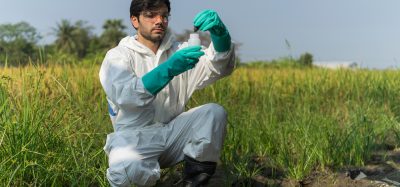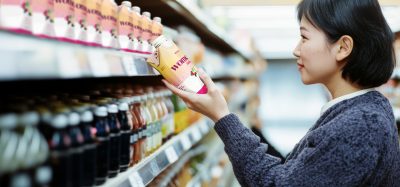Whistleblow in confidence
Posted: 25 June 2020 | Huub Lelieveld, Veslemøy Anderson | No comments yet
With increased awareness of fraudulent food practices that affect businesses and consumers to varying degrees, comes a need to tackle them before they cause serious harm. New Food hears from two experts about new industry measures that aim to encourage whistleblowers to report without fear of consequence.


Not a year passes without there being a victim of food crime; it takes place all over the world and sometimes is so severe that it reaches the global press.
There are several types of food crime, the most common of which are those that intentionally mislead customers, industries or consumers for profit. Although this type of crime may be harmful to human health, they are usually incentivised by long-term profit making and so causing harm is not in their interests.
A slightly more serious class of food crime involves the addition of illegal chemicals to prevent food from microbial spoilage. Usually, the chemicals used are those that were previously allowed but have since been found to present health risks. Generally, these crimes do not have a serious effect on health unless the consumption of the adulterated product is high.
A third type of food crime is a form of terrorism: the addition of toxic substances or objects to extort money from food manufacturers or retailers.
Crimes with potential to inflict serious harm often go unnoticed until there are victims. Examples of chemical cases include lead oxide in paprika, lead chromate in turmeric, diethylene glycol in wines, melamine in milk powder; and a well-known microbiological case is Salmonella in peanut butter. What all these cases have in common is that people were aware of the crime but did not alert anybody. There can be various reasons for this. One might be ignorance: those who know about the crime do not understand the health consequences. In other cases, individuals may have doubts which they express to their superior(s), to be told that they need not worry and should just continue with their job. Worse are those cases where some people know and are told to keep their mouth shut at the risk of losing their job and for that reason they comply.
One might argue that the authorities should be doing more in terms of monitoring the food that retailers are offering, but this is not easy to achieve. One reason is that adulteration inspectors do not necessarily know what they are looking for; even when a consumer falls ill, it may take some time to identify the cause. Furthermore, the number of products on the market is huge and inspection services do not have the capacity for regular inspections – unless they have a suspicion and know what to look for. Indeed, they frequently check for the presence of certain illegal pesticides and antibiotics; but in most cases, it is the affected consumer and their doctor who will be the first to know that something is amiss.
The number of victims can vary – in the case of Salmonella in peanut butter, there were nine fatalities and 714 reported illnesses. In the case of melamine in milk powder and other products containing this ingredient, almost 300,000 children were diagnosed with melamine-related kidney stones, of which 52,000 were hospitalised and at least six died.1 The incident happened despite two previous instances (2004 and 2007) where melamine in pet feed had caused the death of cats and dogs.2
Several publications suggest that many professionals knew about the presence of high concentrations of melamine in ingredients used for feed and food products as early as 1979.3,4 It is disturbing that in spite of this knowledge, nobody took any action, until there were victims.
The WG Global Incident Alert Networks of the Global Harmonization Initiative (GHI) were founded to encourage professionals who are aware of wrongdoings in the food chain, to report them. The GHI recognised that the main hurdle to reporting is the adverse consequences for the whistleblower, who seems to suffer badly from reporting their concern, whether internally or externally.
Companies can more easily afford lawyers than individual employees. Moy5 has identified four main impediments to reporting food safety incidents. Firstly, in many societies, whistleblowers are associated with negative connotations: disgruntled employees with psychological problems, hackers and so on. Secondly, is the issue of vulnerability to retaliation: the undesirable consequences may be too severe. Moreover, those with concerns often have no clue where to start. Thirdly, Moy suggests that many companies do not have a whistleblowing policy or simply do not want to listen to so-called ‘troublemakers’.
A fourth obstacle is the absence of legal protection for whistleblowers. Many governments maintain good relations with the industry that takes care of employment and tax income, thus are afraid to damage those relations by implementing laws that may encourage whistleblowing.
But there is some good news. On 7 October 2019, the Council of the European Union formally adopted new rules on whistleblower protection. The new rules require the creation of safe channels for reporting both within an organisation – private or public – and to public authorities. It intends to provide a high level of protection to whistleblowers against retaliation and requires national authorities to adequately inform citizens and train public officials on how to deal with whistleblowing (Council of the EU, 2019). So far, only 10 of the EU countries have laws on the protection of whistleblowers; but from 2021 all 27 Members States will have laws in accordance with the decision of the Council. It remains to be seen how these laws will work in practice.
In the meantime, the WG Global Incident Alert Networks are in the final stage of developing a webpage to facilitate the reporting of seriously harmful incidents without harming the whistleblower. The webpage will enable anonymous reporting (from anywhere in the world) of the following types of incident:
- An unauthorised (illegal) substance being added to food that may seriously harm consumers
- A food poisoning incident that seems to be caused by microorganisms
- Conditions in a food handling premises are such that contamination of the food is likely and may cause harm due to the presence of microbes, insects, other pests, contamination with lubricants, cleaning agents, foreign bodies, etc
- Process conditions for safe production and/or cleaning are not observed
- Internal reporting has been ignored or you believe is likely to be ignored.


Because the reporter is anonymous, it will not be possible to ask questions later and, consequently, the whistleblower must provide all relevant information about the incident at the time of reporting. The webpage therefore will have approximately 75 questions that need to be answered to make it possible to judge whether the reported incident can indeed do serious harm to people’s health. That information will also be used to check whether the report is real or intended to defame a company or individual, is revenge-based, or misplaced humour. To ensure anonymity, the page warns the user several times not to provide information that can be used to identify them. The webpage itself will be protected against illegal access and the form will be available in a range of languages.
What happens with a reported incident?
After receiving an alert, GHI will use its global network of ambassadors and experts to thoroughly and quickly investigate whether a reported incident is of serious concern. Experts include food chemists, microbiologists, toxicologists; nutritionists; hygienists; specialists in food law, regulations and food safety assessments; experts in food engineering and factory design; genetic engineering and other food safety-related disciplines. If confirmed, GHI will inform the National Public Health Institute or the National Food Safety Authority about the suspicion, advising them to investigate. To avoid exposing anybody to unnecessary risks, this will be carried out by the GHI Office in Vienna, Austria, not the local GHI Ambassador or any local expert. If considered appropriate, GHI may also inform the European Union RASFF network and/or INFOSAN/EMPRES (FAO). From there, the local institute or authority should handle the incident.
References
- WHO, 2009. Toxicological and health aspects of melamine and cyanuric acid: report of a WHO expert meeting in collaboration with FAO, supported by Health Canada, Ottawa, Canada,
1–4 December 2008. WHO, Geneva - Qi Li, Pan Song and Jianguo Wen, 2019. Melamine and food safety: a 10-year review. Current Opinion in Food
Science 30, 79-84 - Cattaneo P, Ceriani L. 1988. Melamine in animal meals. Tecnica Molitoria 39(1): 28-32. Downloadable from https://eurekamag.com/research/001/883/001883365.php. Accessed 13 January 2020
- Cattaneo PC, Cantoni C. 1979. Identification and determination of melamine in animals meals. Tecnica molitoria 30(5): 371-374
- Moy GG. 2018. The role of whistleblowers in protecting the safety and integrity of the food supply. npj Science of Food (2018)2:8
About the authors


Veslemøy Anderson graduated from the Department of Microbiology at the University of Oslo, Norway, and worked as a Microbiologist/Research Scientist at the Norwegian Institute of Public Health, Oslo. Later she moved to the Netherlands where she taught microbiology at the 










